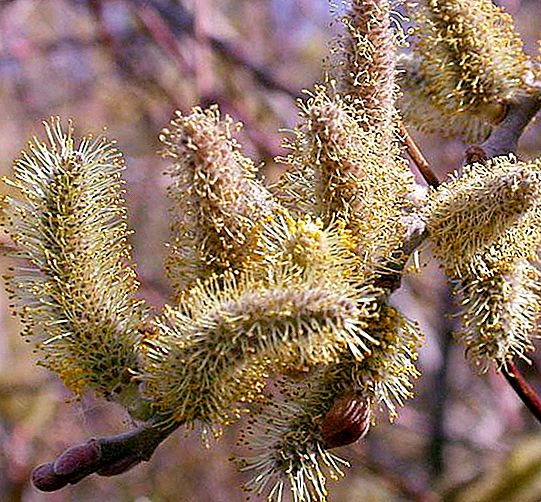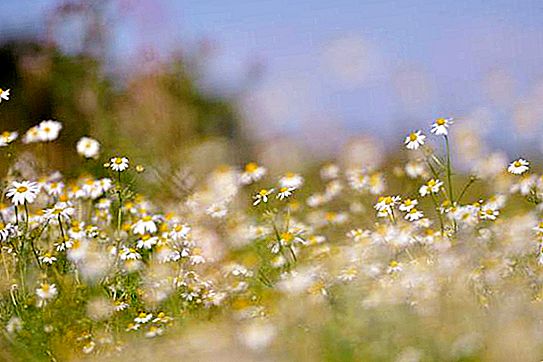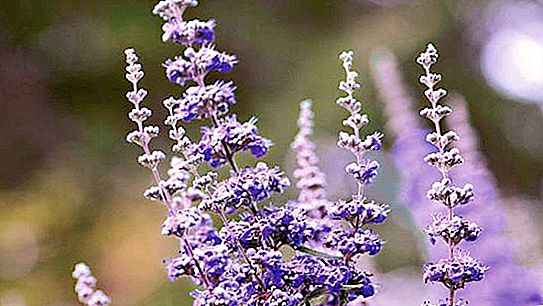We are surrounded by hundreds of plant species, mottled with bright and fragrant flowers. We are so accustomed to them that we don’t even think that their life is the result of an amazing interaction with the environment - insects, wind, water and birds. For seed plants, pollination is necessary, without it they will not be able to continue their genus and fully realized. As a result of evolution, representatives of the flora have found many ways to transmit pollen. In order for pollination to be successful, pollen from the stamens must fall on the stigma of the pistil of another flower belonging to the same species.
Wind pollinated plants
About 20% of flowering plants on our planet are pollinated by the wind. The structure of their flowers is ideally suited for this process, as is the flowering time. In most cases, wind-pollinated plants bloom in spring, until the first leaves begin to bloom. This choice was not made by them by chance, since foliage makes the time-consuming pollination process with the help of wind even more difficult, leaving the poor fellow too little chance of reproduction.

Wind-pollinated plants usually grow in large groups to make it easier for them to perform their difficult task. Their flowers are not distinguished either by bright juicy colors, or by a strong alluring aroma. They are small in size and collected in large inflorescences. The stamens of wind-pollinated flowers hang down and usually have hairs that delay flying pollen. Also, a special adhesive fluid can be used for these purposes. Wind-pollinated plants have dry, light pollen of a smooth shape so that the wind can easily pick it up and carry it away.
Insect Pollinated Plants
Their flowers are the exact opposite of the colors of wind-pollinated plants. They have a bright color and strong aroma. All this is necessary so that insects can notice a flower hiding in its bowels the treasured delicacy. The summer variety of flowers clearly demonstrates the variety of tricks that plants use to attract pollinating insects. Insect-pollinated and wind-pollinated plants have completely different goals. That is why they are so different in structure. Most of the flowers, which are considered to be beautiful, look so that they can be easily seen from the air and distinguished from others.

Another means of attracting insects is aroma. Different insects like completely different smells. So, for example, bees and bumblebees love the sweet floral aromas that people like so much. Another thing is flies that prefer the aroma of rotting meat. Therefore, flowers pollinated by flies exude such unpleasant putrefactive odors.
Amazing harmony
Pollination of plants is an incredibly important matter due to which our ecosystem exists. Insects do this by no means for the common good, they only look for the nectar they eat. And noble plants are ready to provide them with food, but in return they stain the body of the insect with pollen so that it brings it to another flower. For this, the most ingenious and incredible systems created by nature are used. Some plants even hold the pollinators hostage inside the flower until they get enough pollen. Different plants are pollinated by different types of insects, due to the design of their flowers. Color is also of great importance, so white flowers are pollinated mainly at night. Color helps butterflies to notice them, as well as the fragrance that they emit only in the field of sunset.

No less interesting are wind-pollinated plants. Their pollen is not consumed very economically, spreading over great distances in order to fulfill its important mission. But wind-pollinated plants are many crops. But they certainly have no problems with pollination, since their crops occupy whole hectares. No matter where the pollen flies, it will surely hit the target. In the wild, wind-pollinated plants also grow in groups, but, unfortunately, are not so numerous.
Self-pollination
Self-pollination is a process in which pollen from the stamen of a flower falls on its own pestle. Most often this happens even before the flower opens. This phenomenon became a forced move due to the fact that some plant species did not have the ability to cross-pollinate. Over time, this feature has become fixed, becoming constant for many colors. Self-pollination is especially common among crops, but some wild plants also reproduce in this way.

However, self-pollination is not a unique feature of one species; an ordinary plant can resort to its help if there is no one to pollinate it. Also, self-pollinated flowers can be pollinated in a cross way, if such an opportunity is provided to them.




